Richmond celebrates after thrashing GWS by 89 points in the “borefest” 2019 AFL grand final. Photo: AFL MEDIA
The swirling tornado of noise surrounding AFLW has been growing in intensity.
It seems with every passing week, the league’s fiercest critics become more vocal, bemoaning lopsided match results, unwatchable games, and confusing fixtures. Others maintain their position held since the first bounce down in 2017 that the professional women’s competition is an inferior product to the men’s.
It’s certainly not the first time female athletes have faced this kind of uphill battle and it certainly won’t be the last.
But now, eight weeks into the AFLW’s ninth season, with the naysayers roaring in full voice, it’s worth asking another question – why is it that a women’s professional competition seems to be held to a far higher standard than a men’s league?
Why is AFLW in the current position of being forced to explain, defend or apologise for every match in which the losing side kicks only a handful, or in some cases, just one goal?
Why, before the start of the season, did the league feel the need to appeal so hard to fans, promising that matches would be more competitive, pointing out that differentials between winning and losing sides would be narrower?
Is the Australian sporting public that impatient that it can’t recognize that AFLW is just eight years old and in its developing stages?
Not even a decade in and some pundits are questioning: Will the level of play in AFLW ever improve? Is the league worth sustaining?
The answer to both questions is yes.
The original VFL wasn’t built in a day. It too experienced growing pains. And that competition stood on the brink in the 1980s — with clubs playing in rickety, decaying stadiums, losing such huge sums of money that bankruptcy threatened, and mergers loomed – all before it evolved into the national competition it is today, is well chronicled. The game’s brightest minds united to find solutions to expand, rebranded, and evolve.
Imagine if the chorus of critics’ discontent in those gloomy days raged so loud that the VFL leadership simply folded their tent and quit. AFLW leadership needs now to show the same spine and resolve during this scornful storm.
Even if some AFLW matches are unwatchable, so what? That’s bound to happen in any professional sporting competition.
Want to talk unwatchable? What about six of the last eight AFL grand finals?
PLEASE HELP US CONTINUE TO THRIVE BY BECOMING AN OFFICIAL FOOTYOLOGY PATRON. JUST CLICK THIS LINK.
The most recent, between Brisbane and Sydney was well and truly over by half-time, with the Lions winning by 10 goals. Go back to 2022, when the Cats smoked the Swans by a whopping 81 points, or the COVID-19-affected deciders of 2021 and 2020, in which the losing sides were beaten by 74 and 31 points respectively.
But even those results pale in comparison to arguably the most anti-climactic borefest season-decider in Australian sporting history, the 2019 grand final, in which Richmond obliterated Greater Western Sydney by 89 points.
No-one called the AFL itself unwatchable after those results. No-one brayed about the unevenness of the competition, or said the skill levels of the players wasn’t up to par.
In those blowout grand finals, the losing side – with the exception of the 2021 Bulldogs – kicked fewer than 10 goals. The Giants in that 2019 debacle kicked just three. Yet pundits weren’t panicking like children’s folk tale character Chicken Little and irrationally yelling: “The sky is falling!”
Does AFLW have issues that merit serious soul-searching as it pushes forward? Of course.
The AFLW brains trust must decide on and commit to playing out a season in a time of year that best captures and holds footy fans’ attention and not risk losing punters to footy burnout.
Fixtures must be aligned so that teams aren’t “accordioned” into playing one match after an overly-long break one week, then rocking up to the park after a ridiculously short one the next.
Sports medicine, orthopedic specialists, and female sports footwear experts absolutely must convene to do something — anything — to stem the tide of an unfathomable rise of ACL injuries to players, including some of the league’s best.
Perhaps an English Premier League system of relegating struggling clubs to a second division should be considered as a temporary solution to restore competitive balance, as adding 10 new clubs between 2019 to 2022 has thinned the talent pool.
But one thing should never be considered — people turning their backs on AFLW and giving up.
The baby shouldn’t be thrown out with the bath water. Female footballers have toiled too hard and have deferred their professional dreams for too long to have their aspirations snuffed out all because haters didn’t extend to them and their league the same patience and forgiveness they’ve given male footballers and their respective competitions.

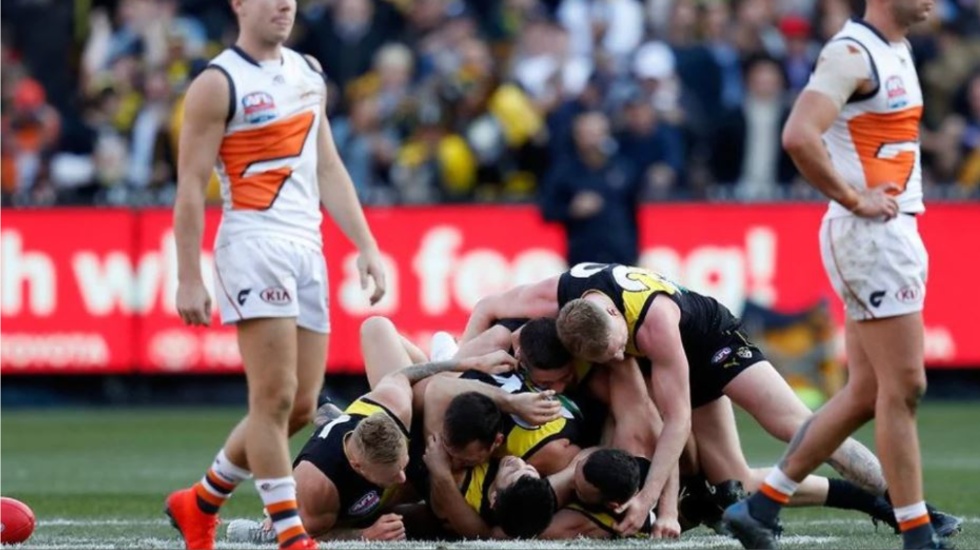
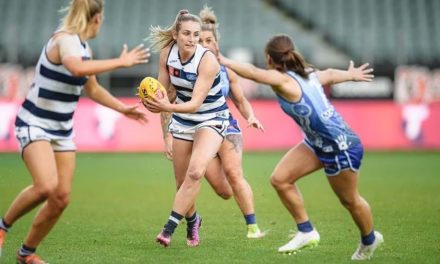
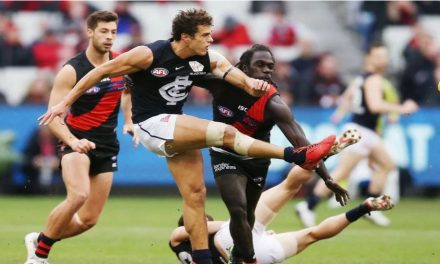
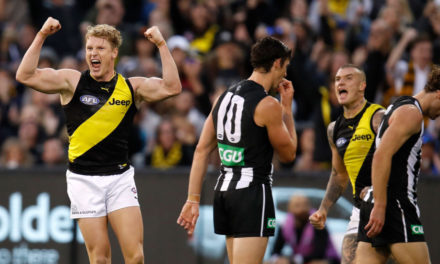
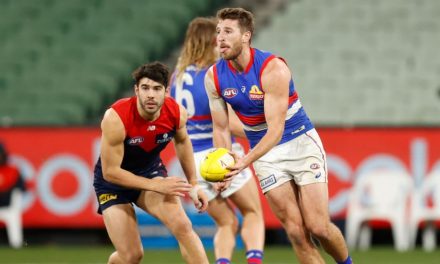






I am a big fan of the AFLW, and I take it as seriously as the AFL.
I don’t like the fact that not every team plays each other which leads to a grossly unfair draw. Hawthorn has been given an armchair ride into the finals with their ridiculously soft draw. Melbourne won a grand final in 2022 because they had a much easier draw than North Melbourne, hence their ladder position was lower than Melbourne’s, making it harder for them to get to the grand final. The private school WASPS who run the AFL wanted their team (Melbourne) to win an AFLW flag. The fixture was manufactured to help their team finally get one.
A change is needed, because at the moment only four teams have a realistic chance of winning an AFLW premiership, namely Brisbane, Adelaide, North Melbourne, and Melbourne. Clubs like Carlton, and GWS will never win an AFLW flag. Both these clubs are feeder clubs as opposed to destination clubs.
The Carlton Football Club has never taken the AFLW seriously. They appointed Daniel Harford as a part time coach, and they trained at night. They appointed that clown Andy Maher as a runner. Maher was more interested in showing off to the cameras than the game at hand. They appointed a dud in Brett Munro as director of women’s football. Munro was more interested in empire building than the welfare of the players. Munro is responsible for the mass exodus of talented players from the club, because of the way he treated Tayla Harris. Players could not wait to leave the joint because they were sick of training at night, and they did not want to play for a club that refused to give their best forward better pay. Maddy Prespakis wanted mentoring to take her game to the next level, but Munro dismissed her pleas. Georgia Gee said she was no longer happy at Carlton because of the low morale caused by Munro’s bloody minded attitude towards Harris.
Players didn’t feel they were at a serious football club when they saw Maher grandstanding to his Channel 7 buddies. They were also exhausted after finishing training at 10pm. They saw things were different at clubs that took the AFLW seriously.
To make matters worse Carlton went ahead and appointed a no name coach in Mathew Buck. Buck has an extremely negative and taxing game plan that is supposedly about restricting the scoring of the opposition. Instead of restricting the opposition’s scoring, his game plan restricts his team from scoring. The players end up taking shots from tight angles as they never go straight down the field. Apart from Buck’s lackluster (and quite frankly boring) game plan, he will be remembered for two monumental disasters, the first one was trading Brooke Walker for Essendon’s pick nine, thus plunging the club further into a rebuild, and the second (unforgivable) one of offloading their best defender in Laloifi, for no apparent reason. How can a coach who is all about defense get rid of an A grade defender?
The players don’t look happy under Buck, and they are clearly not enjoying their football. They look stressed, angry, and rattled. This was clearly visible in the game against Footscray. The Dogs played a positive brand of football which allowed for scoring, whereas Carlton tried to limit scoring which failed dismally. The Footscray players looked upbeat and got around each other, whereas the Carlton players were looking more and more angry. The Carlton players have gone into self preservation mode and are auditioning for new clubs come season’s end. Buck has lost the players, and their confidence is shot. After the game against the Bulldogs they huddled up, and the mood was one of intense anger. The group didn’t console one another, they stood there looking extremely unhappy and irate. An observer could tell that many wanted out. Commentators even wondered what was said in the huddle as they remarked on the demeanor of the players. In the last quarter Bree Moody lashed out at an opponent was lucky not to get reported. Her anger has reached boiling point.
That right wing blow hard Tom Elliott was surprised by the small crowd at the Carlton v Brisbane game. The reason for the small crowd is because Carlton fans have had enough. They are over the negative game plan and Mathew Buck’s excuses. They want to see goals scored and players having a go. They would rather lose by 100 points but see their side kick 10 goals, than lose by 30 to 50 points but only see their side kick 4 goals tops. Carlton fans are going to games knowing that they will not kick over 5 goals. At Footscray you can see a bright future ahead, however the future looks grim at Carlton.
Carlton fans are asking just because you support Carlton in the AFL does it mean that you have to support them in the AFLW? Others have said that they will support another AFLW team but they haven’t worked out which one. I can no longer support Carlton AFLW as they are in this predicament due to total mismanagement and lack of care for players welfare. It would be easy to jump on board the North train and see a premiership, but believe it or not I have switched to Footscray. Why Footscray you may ask? Firstly because they are my local side, and I go down the street to watch them, and secondly because I want to be on the journey to see them get their next premiership.
No Carlton supporter wanted Harris to leave, and Harris did not want to go. The club could have easily come to agreement with her. They could be in a position of challenging for finals as many of the other players who left would have stayed. Even if some left, the club would have had no problem attracting big name players with an All Australian forward. If Munro had taken Prespakis seriously she probably would have stayed. Once again Carlton would have been able to attract big names with an All Australian midfielder in the side.
A long story short there are two solutions to all these problems. One is bring back conferences, while the other is relegation. Carlton, GWS, GCS, and Collingwood may be better off in a lower league where they can win more games. As it currently stands the future is grim, if not dire, for all these clubs.